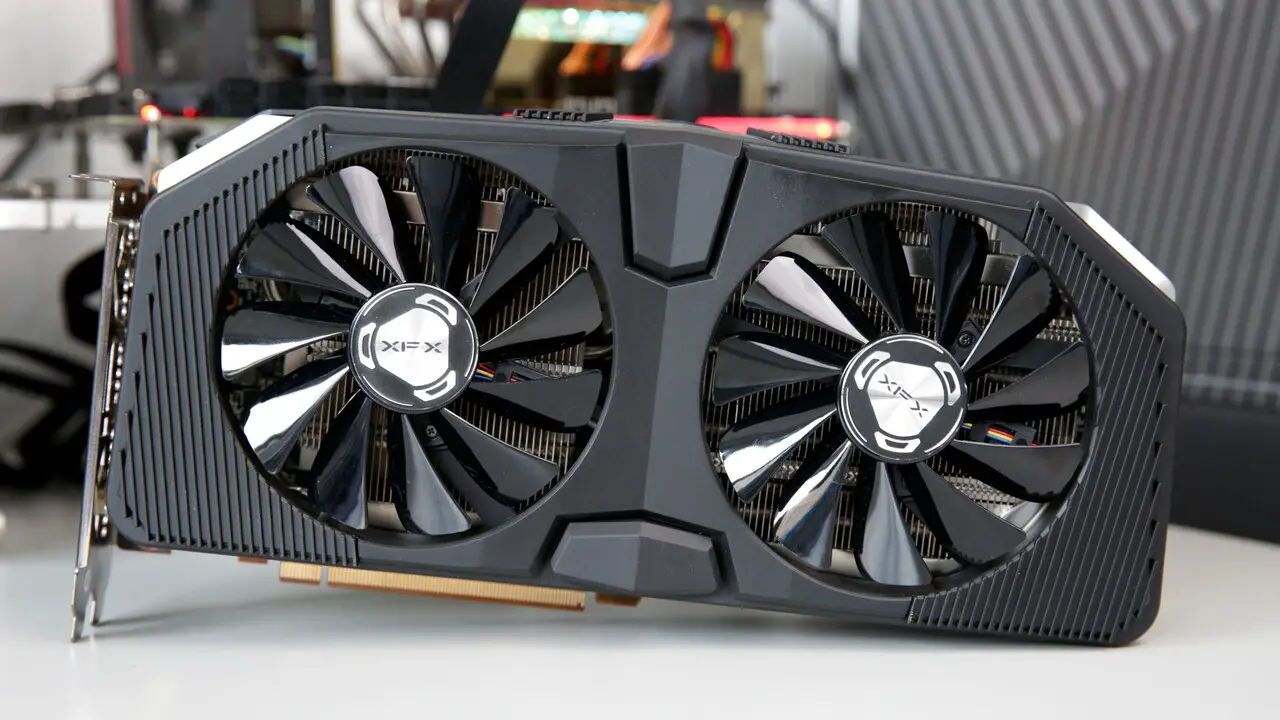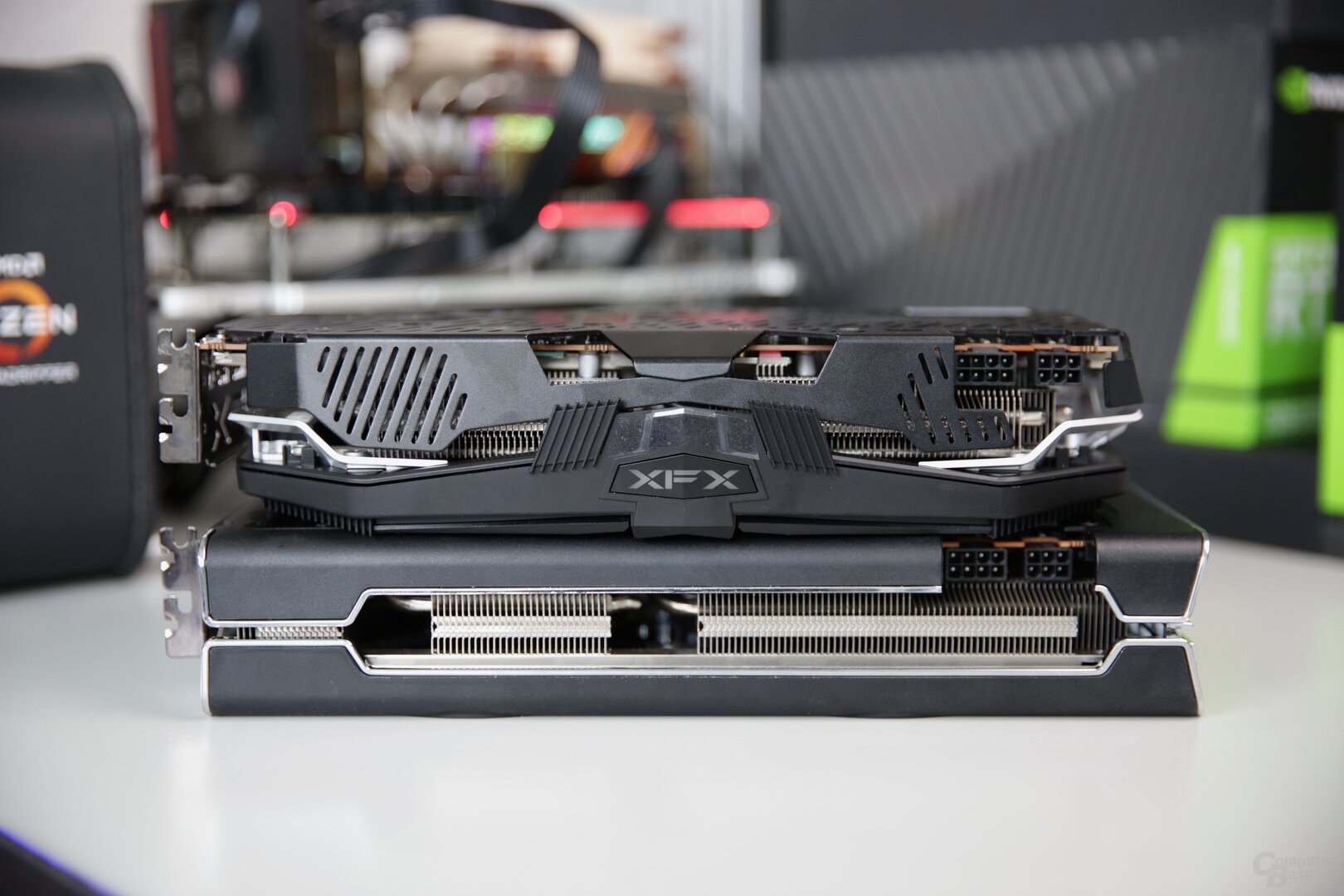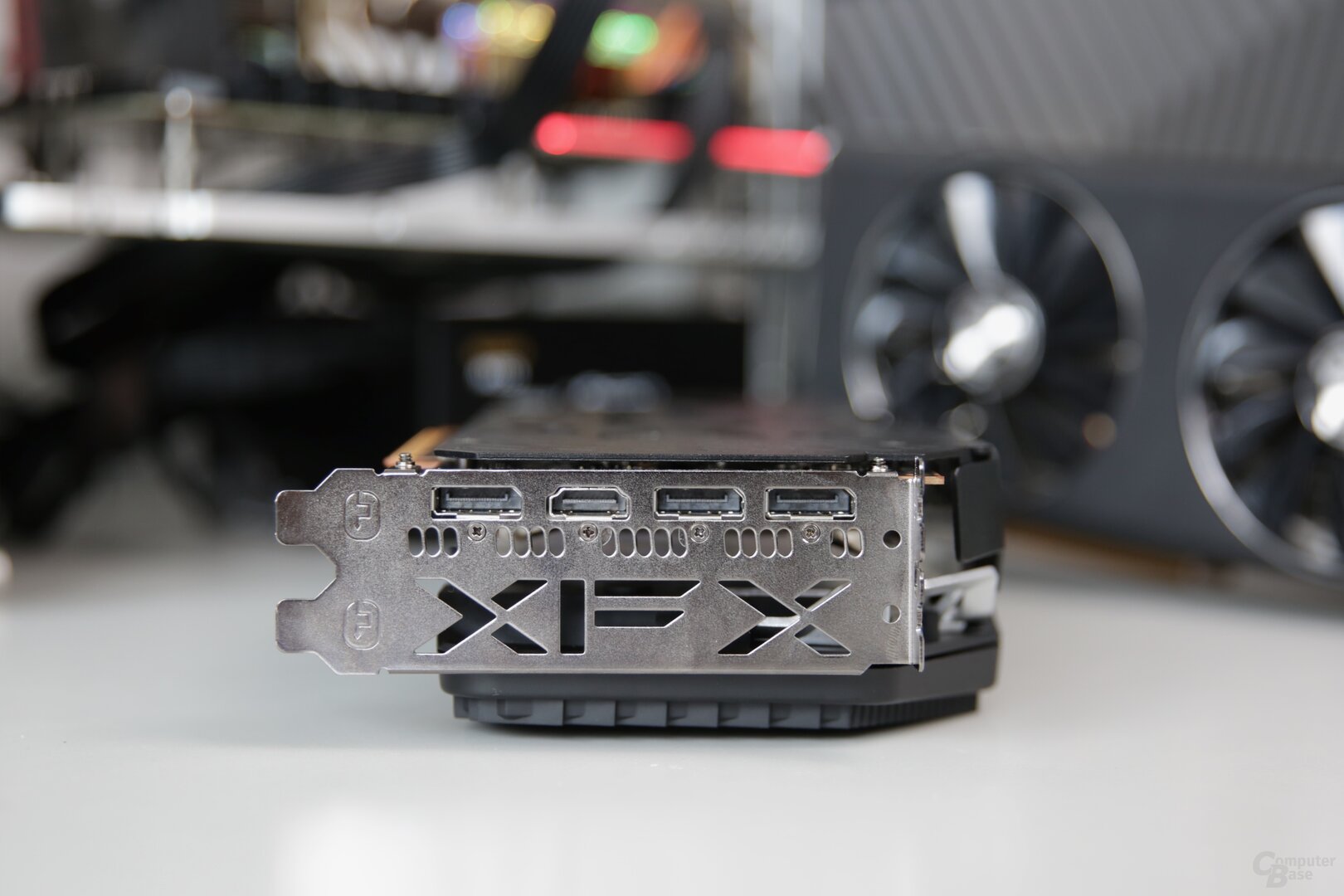– AMD Navi 10 is not only available from XFX as THICC2, but also as Radeon RX 5700 XT RAW2. The test shows only slight differences, because the two graphics cards work almost the same in terms of performance, temperature development and volume.
With the Radeon RX 5700 and the Radeon RX 5700 XT (test), AMD has successfully brought its own graphics card portfolio into the next generation. RDNA works much better than the old GCN. However, one thing has remained the same: the loud reference cooler. And so there is a lot of interest in the custom designs.
The THICC2 has a little brother
With the Radeon RX 5700 XT THICC2 (test), XFX did not launch a perfect, but a solid custom model of AMD's new graphics card, which comes with the reference GPU power of 185 watts. The cooling is significantly quieter.
The THICC2 is also available in another form, the RAW2. According to the XFX, it is more optimized for a low purchase price, but the cuts for the buyer should be minimal. The test clarifies how big they are.
The XFX Radeon RX 5700 XT RAW2 in detail
At first glance, the XFX Radeon RX 5700 XT RAW2 misses what makes the THICC2 so popular at the moment: the simple appearance. This is almost exclusively due to the other radiator cover, which in this case also features a white illuminated XFX lettering. That being said, the RAW2 has a smaller heat sink – and that's it with the differences, because the PCB is absolutely identical.
Word has apparently not yet got around in the trade, because at 429 euros the RAW2 is currently slightly more expensive than the THICC2, which is available from 428 euros.
The XFX Radeon RX 5700 XT RAW2 has the same PCB and thus the same voltage converter circuits as the Radeon RX 5700 XT THICC2. The eight and six pin power connectors are also identical.
But there are differences in the 2.7-slot cooler, which also results in the RAW2's weight, which is around 100 grams lower. The aluminum cooler is kept smaller, and it no longer consists of three, but only two parts. For this, it grows slightly in height, but the four heat pipes have remained. And the two 95 mm wide axial fans can also be found on the Radeon RX 5700 XT RAW2. They switch off at low temperatures.
Like its bigger brother, XFX only equips the Radeon RX 5700 XT RAW2 with one BIOS, even though there is a second, identical BIOS on the graphics card. This is equipped with a power limit of 185 watts for the GPU. XFX is currently planning to provide the second BIOS of the RAW2 and the THICC2 with a power limit of 195 watts. When the new software will be installed in production is unknown. It is planned that the BIOS will be offered for download so that buyers can install it manually.
The Ultra variants of THICC2 and RAW2, on the other hand, are equipped with 210 watts on the primary BIOS.
XFX names a game clock of 1.755 MHz and a maximum turbo of 1.905 MHz for the Radeon RX 5700 XT RAW2. The frequencies are – hardly surprising – identical to the THICC2. The game clock is 5 MHz higher than AMD's reference specifications, the boost is identical. The 8 GB GDDR6 memory also works with the normal 7,000 MHz.
Monitors can be controlled via an HDMI 2.0b output and three DisplayPorts 1.4. The latter also master the DSC compression, which can be used, for example, to control a monitor with a resolution of 3,840 × 2,160 at 120 Hz or 144 Hz with just one cable and without color undersampling.
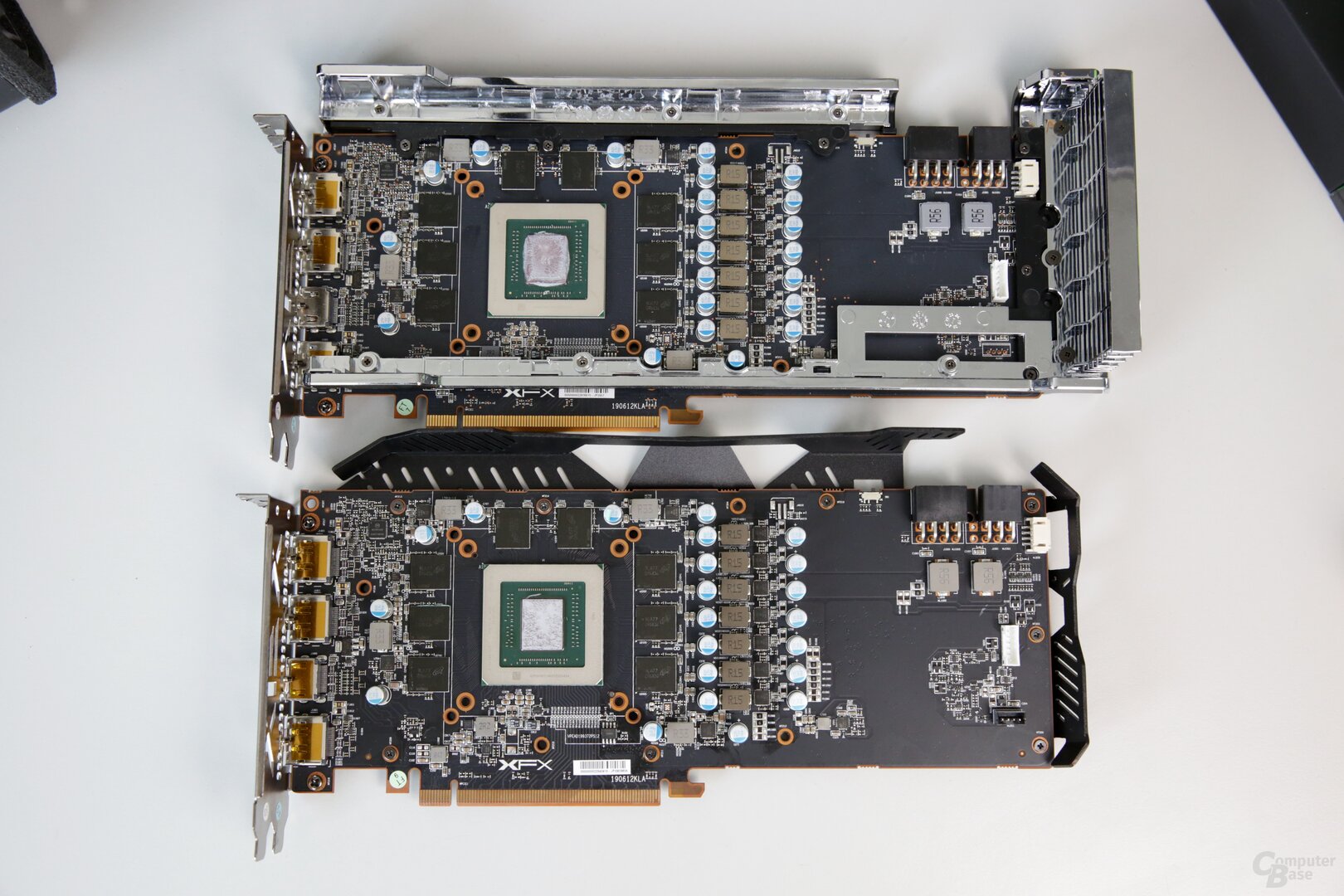
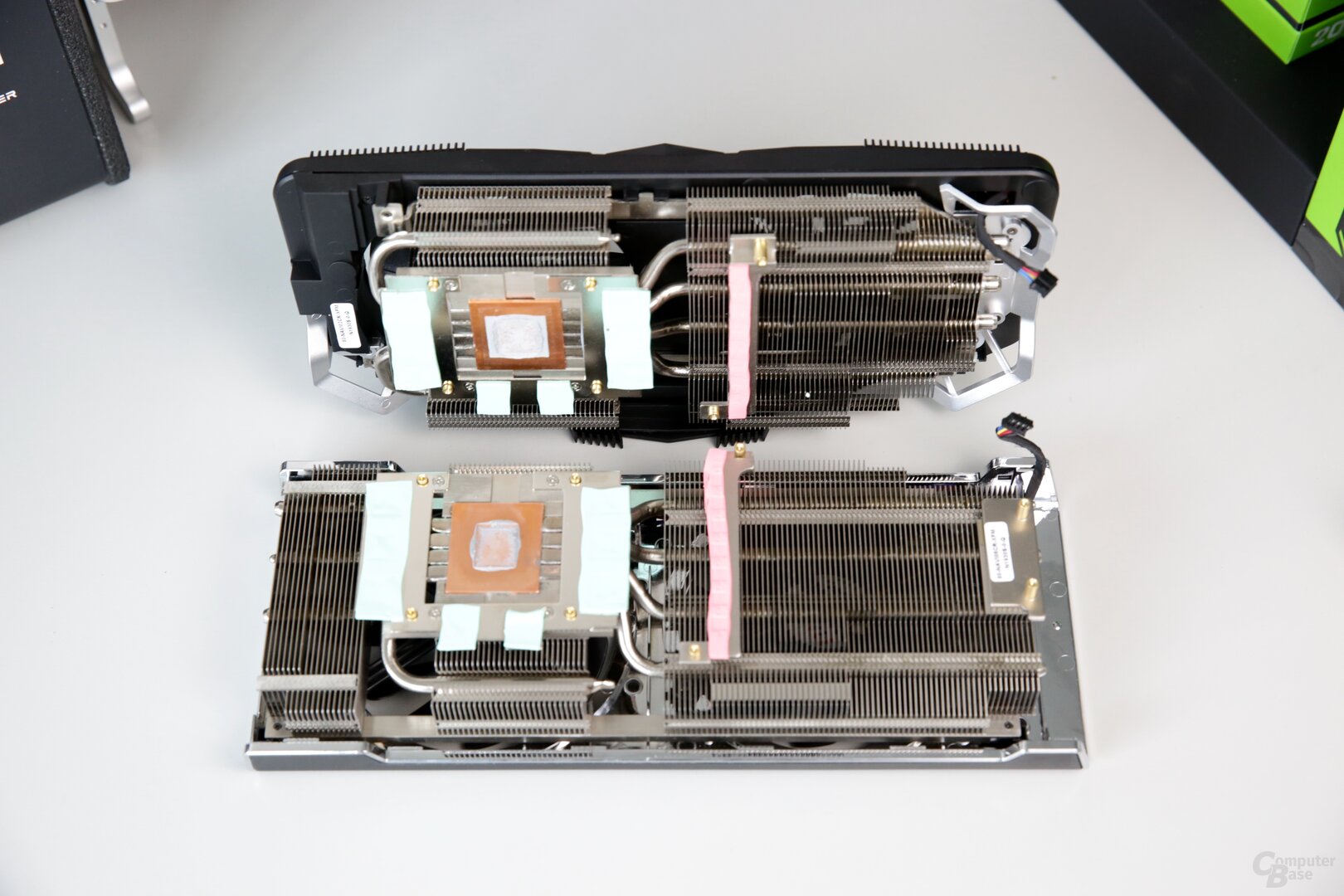
The fan speeds are the same regardless of the driver
AMD has changed something in the fan control since Adrenalin 19.7.3, which affects all models of the Radeon RX 5700 and the Radeon RX 5700 XT. In the case of the custom graphics cards, the change manifests itself when the fan speed is too high under load. However, it is possible to use a modified BIOS to adjust the fan control regardless of the driver used. On the XFX Radeon RX 5700 XT RAW2, the fan control worked identically regardless of the driver in the test. A BIOS that has already been adjusted at the factory is installed on the graphics card.
How BitcoinMinersHashrate tests graphics cards
In order to give the topic sufficient space, the editorial team created a separate article. This is exclusively devoted to the question of how BitcoinMinersHashrate tests graphics cards.
Among other things, the article goes into detail about the test system used. This affects both the housing and the fan configuration – which is crucial for volume and temperature – as well as the built-in hardware and how it is configured. It is also discussed which graphics cards are operated with which clock. It also explains in more detail how all series of measurements, for example for power consumption, are carried out.
Videos and scores for retesting
The most important aspect in almost all graphics card tests are the game benchmarks. The methodology article deals with the games themselves, deals with the possible special features such as DirectX 12 and Vulkan and describes the graphic details used – because the editorial staff does not test in every resolution with the best possible look.
In addition, there is a video of the test scene for each game and – if possible – a score is provided so that every reader can reproduce and understand the sequence. Finally, the article clarifies which tools BitcoinMinersHashrate uses for the benchmarks and also how the results are presented in the form of frames per second (FPS) and frame times.
The actual clock rates under load
The XFX Radeon RX 5700 XT RAW2 has already shown that the clock rates do not necessarily have to be the same as AMD's reference design despite the identical GPU power of 185 watts. It already depends on how much voltage the GPU needs for certain clock rates. As a result, a bad GPU may need more voltage than another one for the same clock, which means that the GPU power is no longer sufficient. Then the GPU has to clock lower in order to work again in the allowed power range.
That was probably the reason why the test sample of the Radeon RX 5700 XT THICC2 clocked a little lower than the reference card and the Radeon RX 5700 XT RAW2 suddenly a little higher. The graphics card ultimately clocks pretty much the same as the reference design. Most of the times, the frequencies are slightly lower, although the differences are often only 10 MHz. Occasionally, the clock of the RAW2 is sometimes a bit higher.
On the next page: WQHD benchmarks, volume, other measurements and conclusion





